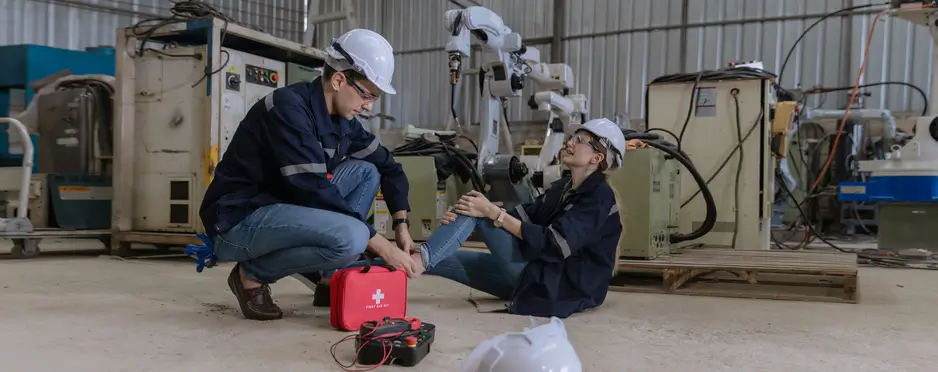Workplace safety is a very important issue that concerns millions of employees every day. Workplace injuries and fatalities remain a big problem in 2025, even with advances in safety protocols and legislation. It can help employers and workers take the necessary precautions to create safer working environments and to ensure compliance with training requirements by understanding the latest statistics about workplace safety.
Based on recent reports and official data from OSHA’s general industry training standards, New York State’s SST and OSHA training rules, the 2025 AFL-CIO report on workplace deaths, and a thorough analysis of workplace injury statistics, this article compiles the most important insights
Importance of OSHA Training Requirements in General Industry
Occupational Safety and Health Administration (OSHA) has put in place strict training standards to help lower workplace accidents and injuries. OSHA’s general industry training requirements require employers to provide general safety training that addresses the particular hazards of the workplace.

It’s not a one-time thing, and training needs to be updated and refreshed regularly so employees are aware of safety procedures.
Key OSHA training focus areas are:
- Hazard communication and chemical safety.
- Lockout/tagout procedures to prevent equipment startup during maintenance.
- Usage and maintenance of personal protective equipment (PPE)
- Fall protection and emergency evacuation procedures.
These are the standards that provide workers with the knowledge and practical skills to confidently deal with workplace risks.
New York State SST and OSHA Training Mandate
In New York, the Site Safety Training (SST) requirement adds to workplace safety training, especially for construction and some industrial workplaces. SST requires certain hours of safety training for workers and supervisors on the most common workplace hazards.
SST is designed to be combined with OSHA’s foundational training so workers know general safety principles as well as the unique hazards of the workplace they work in.

For example, construction workers in New York must take a minimum of 10 – 30 hours of SST, depending on their job. Fall prevention, scaffolding safety, and hazard recognition are part of this training, which are essential in reducing injury and fatality rates.
The way jobs are performed in certain industries results in higher rates of injury and death. To avoid risks such as falls, chemicals and machines, construction, agriculture, healthcare, and manufacturing require people to strictly follow OSHA rules and receive SST training.
In 2025, Alarming Workplace Fatality Trends
Although these training efforts have been put in place, workplace injuries and fatalities are still very high. Thousands of workers still die from preventable workplace hazards, according to the 2025 AFL CIO report.

According to the AFL-CIO Report, Key Statistics In 2023, fatal workplace injuries were up 8% from 2021, an increase that is concerning. Construction, agriculture, manufacturing, and transportation industries still have the highest fatality rates. In 2023 alone, more than 5,000 workers died on the job, that’s more than 14 deaths a day.
Black and Hispanic workers are more likely to be killed on the job than other demographic groups. Additionally, Toxic substances and workplace violence are causing injuries and deaths, which must be addressed on an urgent basis.
2025 Workplace Injury Statistics That Are Shocking
In addition to fatalities, nonfatal workplace injuries result in tremendous suffering, lost productivity, and financial burdens on workers and their families. Data has been released recently showing how widespread these incidents are.

- There are approximately 4.53 million medically consulted injuries annually in U.S. workplaces.
- In a single year, private employers reported 2.8 million nonfatal workplace injuries and illnesses.
- Persistent safety challenges are reflected in a 17% increase in serious workplace injuries since 2010.
- Nonfatal injuries due to workplace violence amongst healthcare workers account for 73%, and therefore, there is an urgent need for protective measures in this sector.
- Falls, being struck by objects, electrocution, and being caught in or between equipment (the “Fatal Four”) are the leading causes of workplace deaths and are most frequently seen in construction and manufacturing.
More than 395 million nonfatal injuries occur globally each year, and workplace safety is a global issue. These numbers show how important ongoing safety training and sticking to protocols are in reducing risks.
Workplace Injuries and Legal Support, the Cost
Beyond health, workplace injuries and illnesses can be very expensive, including medical bills, lost wages, and reduced earning capacity. Injured workers often struggle to navigate workers’ compensation claims and may not get what they are entitled to without legal assistance.

According to legal experts, injured workers must have a seasoned workers’ compensation attorney to help them get fair compensation and support during their recovery. In industries with high injury rates, legal assistance is especially important to securing medical benefits, wage replacement, and protection against employer retaliation.
Improving Safety for Employers
Proactive measures to improve workplace safety are critical, and employers play a critical role.
- Conduct complete safety training as per OSHA and SST guidelines.
- Continually update training programs as new hazards emerge.
- Make sure that everyone enforces strict compliance with safety protocols and provides proper PPE.
- Performs routine safety audits and risk assessments.
- Encourage a safety culture where employees are encouraged to report hazards without fear.
It is clearly shown by the data that workplaces with strong safety culture and detailed training have fewer accidents and less severe injuries.
Wrapping up
In 2025, workplace safety is still a critical challenge, with millions of workers being injured, sickened, and killed every year. Although OSHA and state-specific training programs like New York’s SST have taken giant leaps in educating workers and reducing hazards, the statistics still demonstrate the need for stronger enforcement and a more complete safety culture.
To protect their workforce effectively, employers must prioritize safety training, hazard mitigation, and legal compliance. At the same time, workers should have knowledge of their rights and access to legal support in case of injury.
Understanding and acting on these critical workplace safety statistics helps industries move toward safer working environments, fewer injuries and lives saved, and a culture of prevention.

